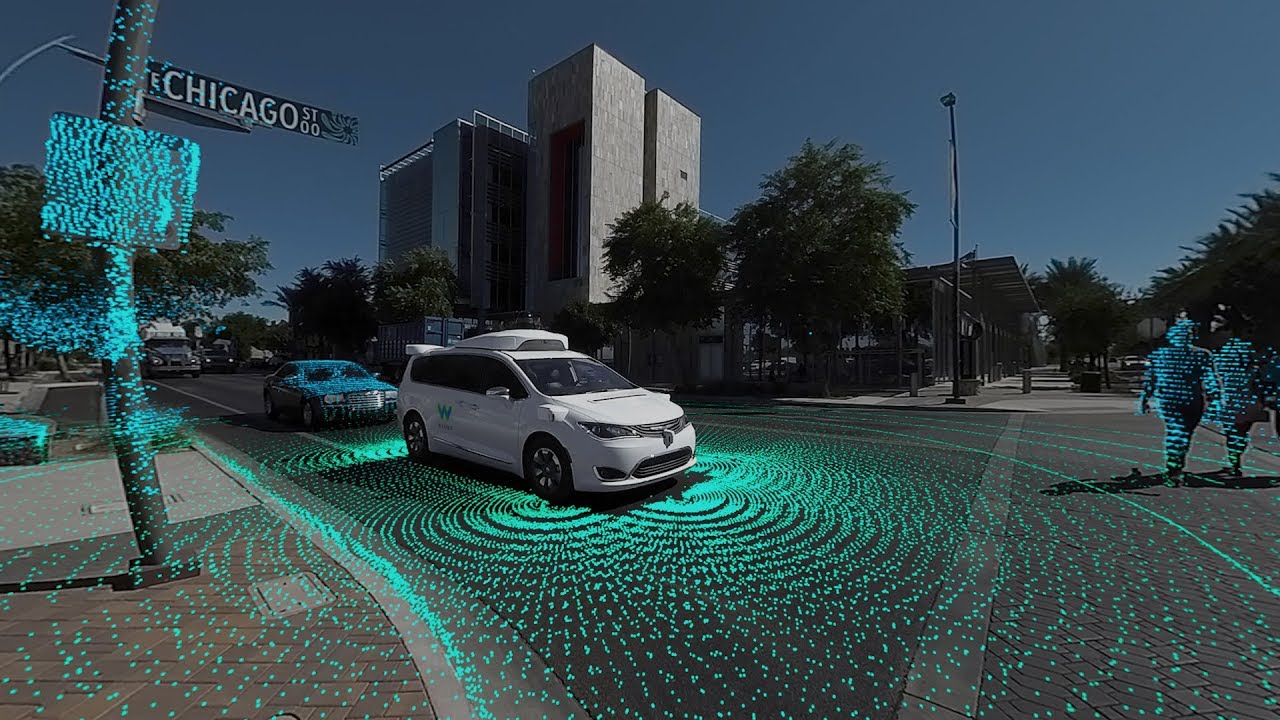
Waymo started in 2009 with Google’s auto-driving vehicle development project and is active under the independent, parent company Alphabet. It has also been one of the few autonomous vehicle technology companies to conduct road tests for more than a year. Wei Mo introduced the 360-degree footage of the self-propelled vehicle technology through its YouTube to the practical use threshold.
The autonomous vehicle recognizes the outside by using a camera or a sensor. Of course, all the objects around the car are high-resolution 3D data with high-performance laser-based rider (LIDAR). Measure both the exact distance to the object and the speed of movement of the object through the radar. In addition, it acquires image information using a high-resolution camera. For example, when you enter an intersection, the camera identifies traffic signal colors.
Thus, autonomous vehicles acquire information through radio, radar, and camera, integrate them, and acquire information such as when humans are driving. In addition to that, when you recognize the scene through machine learning, you can also predict what will happen next. This can be said to be the same as making predictive judgment when humans are driving. WeiMo autonomous vehicles can make such judgments across three areas of a soccer field. It stores geographical information every minute of driving, and it has already obtained a distance information of millions of kilometers through numerous roads.
When you enter the parking lot, you can see the movement of the person walking on the promenade next to the lane or the movement of the bicycle. When the safety is confirmed, if you detect the danger of collision with a person, you wait for it and go forward again.
Weimo last year allowed only its own employees to ride autonomous vehicles. However, John Crawp Sikwei, CEO, said unmanned taxi service using autonomous vehicles could be available in the coming months. It is a matter of telling the fact that the autonomous vehicle service is not a dream at least, apart from the realization in the near future.
Weimo recruited volunteers who were driving the car for the public last year. An early rider program is a service that allows people over the age of 18 who live in parts of Arizona to use the services through screening. The test vehicle was using 100 Chrysler hybrid vehicles, but plans to increase it to 500 vehicles through the pilot (including the Lexus RX450h). Weimo aims to get more data through trial service.
Of course, it is interpreted that Wenmo’s position is reflected, of course. It is essential to develop autonomous vehicles by analyzing the distance and data. But rather than automakers, wei moi can be lagging behind the competitors who are mainly car makers in the total amount of data. Even if it is not a manufacturer, Ubber will collect data from around 160 million kilometers of driving distance around the world every day. Tesla gets 8 million km in the same way and Toyota gets 4.3 million km of mileage and data. Compared to this, the mileage of Weymo is only 4.8 million km. In the end, we can say that similar programs or services are needed to secure the quality and quantity of data.
For this reason, some analysts have accused Otto of Uber and Uber for the reason that Weimo stole his corporate secrets in December 2016. At the time, Ii Mo’s claim is like this. As mentioned earlier, Ryder is one of the autonomous driving system support technologies. Riders monitor millions of laser beams to measure how long it takes to get them back. Weimo had to spend millions of dollars and time to develop its own rider system.
However, it was alleged that the former employee of Uber-Otto had imported confidential information about the rider. Six weeks prior to retirement, the design server received 9.7GB of important rider-related data.
WeiMo has been developing autonomous vehicles for the longest time including Google. Weimo has developed a two-passenger self-propelled vehicle, Firefly, that will not even have a steering wheel or even a pedal in 2017, but has announced that it will focus on developing a hybrid-type vehicle capable of automatic and manual switching.
Firefly was first introduced in 2014 for testing purposes. Compute integration is a test vehicle for building experience where to install sensors for autonomous vehicle development. They placed dome-like components on the roof, incorporating rider sensors, and ran millions of kilometers of tests. However, the emphasis on hybrid technology reflects the goal of rapidly spreading autonomous vehicle technology to more people. Actually, the maximum speed of Firefly is only 40km / h, but the hybrid car is capable of self-propulsion beyond this speed.
This form of complementing the combination of manual and automatic is similar to Toyota’s approach. In May last year, Weimo detected a crash, softened the bumper and reduced the impact on people by giving a patent. To reduce stiffness, the cable inside the gun is used as a cushioning material. It also takes into consideration the fact that there may be a problem with the safety of the passenger when colliding, which reduces the body rigidity itself. Wei also patented a technology that would reduce the impact of a hit person like Google.
When the era of autonomous navigation is opened, people say that mistakes are less likely to happen than humans, and traffic accidents will be dramatically reduced. However, as autonomous vehicles may not eliminate traffic accidents at all, it is necessary to study how to minimize damage when an accident occurs. In addition, as Toyota’s example suggests, developing people to help them to be more secure can help make autonomous driving a reality more quickly.




